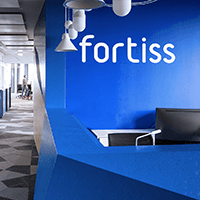Low-code platforms are designed to bridge the gap between the need for digitalization and process automation, especially in smaller companies, and the shortage of skilled workers in the IT industry. Instead of using complex programming languages, they enable the creation of applications using intuitive visual tools and graphical models. The TIVITY AI research project focused on adding AI functions to TIVITY's existing low-code platform. With these results, fortiss was able to help accelerate the integration of AI in various industries and support companies in taking advantage of this technology.
Milestone in process optimization
Over the past three years, the scientists in the Human-centered Engineering competence field have developed innovative solutions that address the challenges of AI integration in various industries. At the beginning of the project, competence field leader Dr. Yuanting Liu and her colleagues first conducted analyses and literature research to understand the specific challenges and requirements of industry experts who want to use AI in their work processes.
As one of the areas with the greatest potential for the automation of workflows and processes, the field of motor and liability insurance was selected as a case study. Through structured interviews and contextual surveys of insurance company employees, fortiss gained valuable insights into the mental models and workflows of industry experts. The research shed light on the complicated decision-making processes that rely heavily on instinct and prior experience, as well as the multiple sources of information that are essential for effective problem solving.
Based on these findings, fortiss scientist Dr. Mariam Hassib initiated a user-centered design process in which personas and user flows were developed to reflect the needs and processes of insurance professionals. Complex workflows were carefully broken down into manageable subtasks suitable for automation. To identify the most feasible and at the same time most desirable automation options, the researcher gathered valuable input from both professionals and AI specialists through surveys.
Productivity transformation through AI-supported solutions
Comprehensive flowcharts were then developed to model industry-specific workflows. These allow users to define their individual problems, set up rules for dealing with missing or incorrect data inputs and select appropriate AI models tailored to their applications.
SMEs can benefit from the project by using a problem-decomposition prototype to break down their processes into basic tasks, discover which tasks can be automated and by which (AI) method, and get an overview of the required resources for successful implementation.
In addition, fortiss has developed a user-friendly wizard prototype that provides step-by-step guidance for problem solving and automation implementation. In the future, fortiss plans to refine the prototype wizard to generate customized commands for Large Language Models (LLMs) - a significant advance that will personalize automation results for each user. This development promises task automation that will enable non-professionals to harness the power of AI for their daily tasks.



